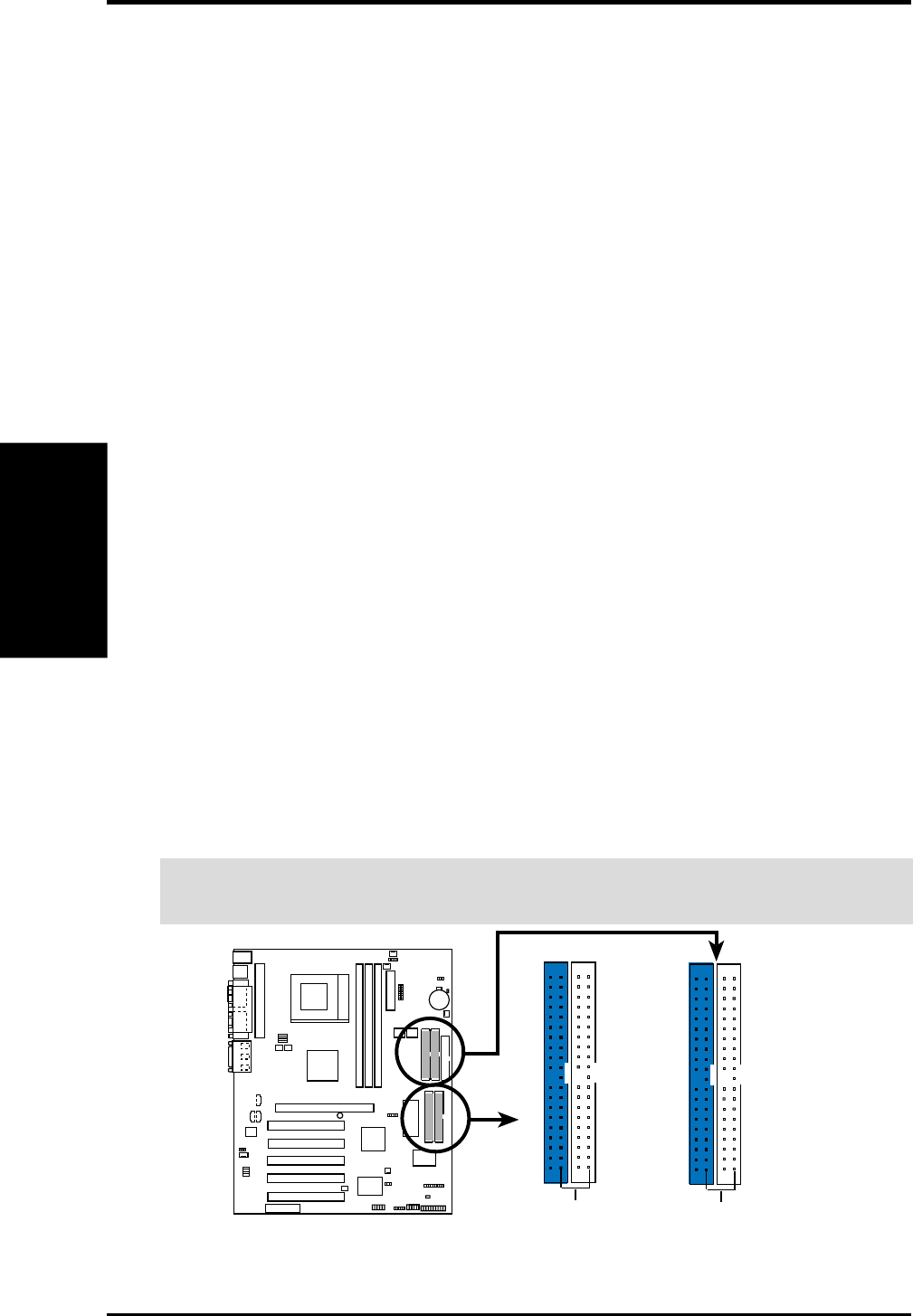
36 ASUS A7V133 User’s Manual
Connectors
3. H/W SETUP
3. HARDWARE SETUP
9) Primary (Blue) / Secondary (Black) IDE Connectors
(40-1 pin PRIMARY IDE and SECONDARY IDE)
(40-1 pin PRIMARY ATA100 and SECONDARY ATA100)
These connectors support the IDE hard disk ribbon cables supplied with
the motherboard. Connect the cable’s blue connector to the motherboard’s
primary IDE connector (recommended) or the secondary IDE connector. Then
connect the opposite end of the cable to your UltraDMA/100/66 device (hard
disk drive). A second slave hard disk may be attached to the intermediate
connector on the cable. If a second hard disk drive is connected, you may reset
its jumper to Slave mode. Refer to your hard disk documentation for the jumper
settings. It is recommended that non-UltraDMA/100/66 devices be connected
to the secondary IDE connector. BIOS now supports specific device bootup
(see 4.4.1 Advanced CMOS Setup). (Pin 20 is removed to prevent inserting in
the wrong orientation when using ribbon cables with pin 20 plugged). If
you have more than two UltraDMA100/66 devices, you will need to purchase
another UltraDMA100/66 cable.
The A7V133 motherboard is supplied with two extra onboard IDE connec-
tors: one Primary ATA-100 IDE and one Secondary ATA-100 IDE. You can use
them to setup the RAID 0 or 1 arrays and to support extra IDE devices. For the
purposes of RAID arrays, adjust the jumper settings: see 3.4 Motherboard
Setting, ATA-100/RAID 0 or 1, page 20. A total of eight hard-disks, two on
each IDE connector, can be connected to the A7V133
TIP: For high-performance and RAID 0 or 1 set ups, you should always setup
two hard disks with two separate ribbon cables, one for the primary IDE con-
nector and another for the secondary IDE connector. Usually, both disks may
be set to the Master settings: see 5.4 Software Setup for more information about
RAID. Also, you may install one operating system on an IDE drive and another
on a SCSI drive and select the boot disk through 4.4.1 Advanced CMOS Setup.
NOTE: UltraDMA/100 is backward compatible with DMA/66 and DMA/33 and
with all with existing DMA devices and systems, so there is no need to upgrade
current EIDE/IDE drives and host systems.
A7V133 IDE Connectors
NOTE: Orient the red markings
on the IDE ribbon cable to PIN 1.
Primary IDE
Secondary IDE
PIN 1
01
01
01
A7V133
Primary ATA-100 IDE
Secondary ATA-100 IDE
PIN 1
IMPORTANT: UltraDMA66 and UltraDMA100 IDE devices require a 40-pin
80-conductor cable and RAID arrays only operate with such cables.


















